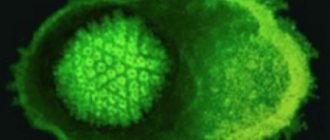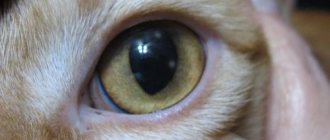Cystitis in cats is a common problem characterized by inflammation in the urinary system. The disease constantly returns and becomes chronic, so owners will need to carefully monitor the health of their pet. The disease is accompanied by a lot of difficulties, but timely diagnosis makes it possible to successfully treat cystitis.
The risk group includes cats with weak immune systems that prefer a minimum of movements. Young or old animals, pregnant women, those treated with corticosteroids - all of these categories have an increased risk of developing pathology.
Inflammation of the bladder causes suffering in pets. They have a weakened immune system, are prone to obesity, and infection can even be acquired during surgery.
The danger of cystitis in cats
Lack of diagnosis and treatment leads to a sharp exacerbation of the symptoms of cystitis, which provokes serious complications. Bacteria, entering the body, spread through the blood and penetrate the kidneys, which causes renal failure and peritonitis. The reproductive system is often affected.
There is a deviation in the alkaline environment of urine, and stones form. Cats are more susceptible to urolithiasis; they have a narrower and more tortuous urethra. A small amount of sediment is enough to block the passage. The salt plug stops the excretion of urine. The life expectancy of a pet in such an extreme situation, without medical assistance, will be several days.
Untreated cystitis becomes chronic. Relapse of the disease is provoked even by banal hypothermia. Treatment should be carried out only if the presence of cystitis is confirmed. The inflammatory reaction may be caused by another disease that will need to be eliminated first.
Side effects
The use of Furadonin may cause side effects such as:
- Disturbance of the digestive tract - nausea, vomiting, emaciation, pain in the epigastric region. Signs of hepatitis, jaundice and diarrhea are rarely observed.
- Dysfunction of the respiratory system - cough, chest discomfort, eosinophilia are observed, signs of asthma develop in people suffering from asthma attacks.
- Headache, dizziness, insomnia or drowsiness.
- Allergic reaction - skin rash, hyperemia, itching. Urticaria and angioedema are sometimes possible.
- Changes in laboratory blood values.
- Other manifestations include fever, myalgia, and arthralgia.
Causes of the occurrence and development of the disease
Both external and internal factors can provoke inflammation, namely:
- infection of the urinary system;
- helminths;
- diabetes, in which the level of glucose and protein increases, creating conditions acceptable for bacteria;
- eating low-quality feed, overeating;
- low fluid intake when regularly eating dry food;
- walking in low temperatures;
- the formation of salt deposits and calculi in the urine;
- infection that has become chronic (leukemia);
- pelvic injuries as a result of an unsuccessful jump;
- damage to the reproductive system (endometritis), complications after childbirth.
Even stress can provoke inflammation. It negatively affects the immune system and weakens it. Cats are lovers of cleanliness, unsanitary conditions in the house, an uncleaned litter box - all this becomes the cause of cystitis.
Frequent abstinence increases the concentration of urine, creating an acceptable environment for the development of pathogenic microorganisms. A capricious pet needs to be carefully monitored, changing its tray daily.
Urolithiasis (urolithiasis)
With this disease, it is necessary to understand that not providing timely assistance to the animal can lead to its death! Urolithiasis (urolithiasis) is considered a chronic disease in which the formation of salt deposits occurs in the kidneys, urinary ducts, and bladder.
Unpleasant sensations and pain are caused in the animal by stones formed from sand. This is a dangerous phenomenon, since, moving with the flow of urine, stones can clog the urinary ducts, which will lead to stagnation of urine and poisoning of the animal’s body. And untimely provision of assistance leads to the death of the pet.
Factors in the development of the disease
Pet owners need to know what can lead to the development of urolithiasis in their pet after the castration procedure. And also, the main symptoms and possible complications. Among the variety of factors that provoke the disease, we highlight the following:
- improper nutrition of the animal. Urolithiasis develops in the presence of fatty foods, fish, and feed of low and questionable quality. Increased content of proteins and minerals in the diet;
- mixed nutrition. This happens when the diet alternates between feed mixtures and natural food. Such a diet can lead to metabolic disorders and the development of urinary tract diseases;
- pet's sedentary lifestyle;
- insufficient water intake;
- drinking water with a high content of salts and minerals;
- hereditary predisposition;
- congenital pathological diseases in the genitourinary system;
- infectious diseases (streptococci, staphylococci);
- diseases and disorders of the digestive system.
Symptoms of urolithiasis
Urolithiasis can be detected at the first, initial stage only through laboratory urine testing. Since the first symptoms are little noticeable. Most often this is a decrease in the animal’s appetite, discomfort when urinating, decreased activity, and lethargy.
Under no circumstances should illnesses be allowed to spread. Progressing further, a large number of stones are formed, which, moving along the urinary ducts, can clog them completely or partially. At this stage, urolithiasis in cats is accompanied by certain symptoms:
- on palpation, the abdomen is tight and hard, the presence of painful sensations when pressed;
- the animal meows loudly, caresses, and behaves intrusively. Tries to attract attention;
- frequently visits the toilet, but does not have bowel movements;
- when urinating, meows loudly, which indicates acute pain;
- tries to go to the toilet in the wrong place, which was not typical for him;
- urine with blood. This is a symptom of hematuria. Stones moving along the ducts injure them and blood from the wounds enters the urine.
Classification by type of inflammation
Pathology is divided into 7 types, according to the cause of occurrence and accompanying symptoms. Treatment follows a similar scheme, despite the differences.
Idiopathic
This variety is characterized by the absence of factors provoking inflammation. The manifested symptoms have varying degrees of severity.
From the point of view of veterinarians, one of the causes of the disease is stress. They disrupt the neuroendocrine regulation of the bladder. Hormones are actively released that increase vascular permeability. The result is the appearance of vulnerability of the walls of the bladder.
Purulent
A plaque of pus is present in pets with weak immunity. The nature of the disease is bacterial. An active inflammatory process provokes intoxication and fever. Urine has small clots of pus mixed with bloody streaks and pieces of tissue covering the bladder.
Ulcerative
This form is a complication of purulent pathology. The muscle tissue is subject to deformation, and festering ulcers appear on it.
Phlegmonous
This type of pathology does not have clear boundaries. The mucous membranes contain white blood cells produced by the body to suppress infection. Such cystitis often occurs with immunodeficiency and paracystitis, characterized by an inflammatory process in the tissue of the bladder.
Gangrenous
Extremely severe form. One likely outcome is the development of peritonitis. Inflammation is present throughout the organ, causing tissue necrosis.
Hemorrhagic
Refers to purulent and serous-catarrhal forms of cystitis. Blood vessels become thinner, their permeability increases, which is accompanied by severe hemorrhage, red blood cells are released along with the urine. The urine will contain red bloody clots.
Urolithiasis causes damage to internal tissues. The passage that removes urine becomes clogged with dense blood clots.
Serous-catarrhal
This form of cystitis is characterized by profuse swelling of the mucous membrane and dilation of blood vessels. Particles of the urinary epithelium begin to flake off. Excessive levels of leukocytes cause the formation of inflammatory exudate. Urine becomes cloudy, as dead cells, mucus, and other products formed under the influence of inflammation are excreted along with it.
Features of cystitis
Cystitis is an inflammatory disease affecting the bladder. It is quite dangerous in that if a pet has had it at least once, then subsequently he will encounter this disease more than once. Cystitis in cats can be a precursor to urolithiasis. Inflammation of the bladder is caused by colds. Veterinary medicine distinguishes between different forms of feline cystitis:
- Acute – occurs when an animal gets sick for the first time.
- Chronic. With this form, the cat looks healthy in appearance. A chronic disease is more dangerous than an acute one in that it impairs the functioning of the entire body and weakens the pet’s immunity.
- Idiopathic cystitis is the most common cause of urinary tract obstruction in animals. The causes of this type of disease have not yet been clarified, but a third of cats suffering from this disease have this particular type of disease.
- Hemorrhagic cystitis. With this inflammation, blood appears in the animal’s urine, resulting in anemia.
Forms of flow
Based on the severity of symptoms, cystitis can be divided into acute and chronic forms. The first variety is the starting one. Lack of treatment for a long time allows the pathology to progress into a chronic form.
In the acute form, the entire list of symptoms is present. The animal suffers from pain and may empty its bladder outside the tray. A pronounced character appears soon after exposure to a pathogenic factor. If you take the animal to the veterinarian in time, it will be possible to restore the soft tissues of the affected organ, and the inflammation will not have time to cause significant harm to them.
Chronic pathology has episodic symptoms. The cat may get better, but the disease will periodically return. Chronic cystitis weakens the immune system and negatively affects life expectancy. The muscle tissue of the affected organ becomes thicker, which prevents the animal from recovering. Recurrence of cystitis can occur more than twice a year, occurring in an acute form.
Composition and release form
The drug is dispensed from the pharmacy in several dosage forms:
- Tablets have a thin soluble film coating.
- Suspension - mainly used for the treatment and prevention of children.
- Powder - represents small granules of a light shade. Used to prepare a solution.
All dosage forms are intended for oral administration. Packaged in cardboard packaging with attached instructions for use.
The active substance is nitrofurantoin. Its quantity varies depending on the form of release. Auxiliary components: calcium stearate, starch, silicon dioxide and more.
Symptoms of pathology
It is not difficult to detect the presence of the disease, since the animal changes its lifestyle and uncharacteristic habits appear.
The key symptoms of cystitis are as follows:
- frequent use of the litter box, but the volume of urine released will be reduced;
- the cat begins to purr or meow plaintively due to the discomfort present;
- the urine has changed color and there is blood or pus in it;
- the stool has acquired a putrid or ammonia-like odor;
- depressed state, lack of physical activity, partial or complete refusal to eat;
- increase in body temperature;
- pain when lightly pressing the bladder.
Cats are associative animals. They will attribute pain during urination to the litter box, trying to avoid it in the future. The transition to a chronic form becomes a real problem. The cat does not control the excretion of urine; the weakened walls of the bladder no longer hold urine. The only way out of this situation is the use of specialized diapers.
Instructions for use of Furadonin
The medicine must be taken after meals with a sufficient amount of water. The tablets should not be chewed, but simply swallowed whole.
The therapeutic dosage of the drug per day is 0.3 g, maximum 0.6 g for adult patients. This dose is divided into 3-4 doses per day.
For the treatment of mild forms of the infectious process, it is indicated to use 50 mg three times a day.
In acute conditions, a course lasting 7-10 days is prescribed. If no therapeutic effect is observed after the end of the course, the drug is not extended.
To prevent exacerbations of pathological processes and prophylaxis, the medicine is taken in an amount of 1-2 mg/kg body weight.
For children, the therapeutic dose is calculated individually. Per 1 kg of weight there are 5-7 mg of the drug. The total amount is divided into 4 doses during the day.
To make treatment with an antimicrobial agent more effective, it is necessary to consume more protein foods during the course.
Diagnostics in a veterinary clinic
Preliminary diagnosis consists of collecting anamnesis, assessing the general condition of the pet, and palpation. A complete picture can be obtained after the following procedures:
- studying blood and urine tests, any deviations from the norm will be displayed in an unstandardized number of basic indicators;
- blood biochemistry studies, analysis will help determine the degree of damage to the urinary system;
- Ultrasound, which helps to track the presence or absence of tumors in the kidneys;
- Bacteriological culture can determine sensitivity to antibiotics, and the causative agent of the disease is determined.
If necessary, x-rays and cystoscopy are prescribed. Cystoscopy focuses on the inner surface of the bladder. The image will allow you to track the condition of the internal organs.
Diagnosis of the disease
To choose effective treatment, the veterinarian needs to make an accurate diagnosis and determine the cause of the disease. Cystitis is preliminarily diagnosed based on a thorough examination, palpation of the abdominal area and anamnesis obtained from the cat’s owner.
If necessary, the veterinarian prescribes the following diagnostic methods:
- Analysis of urine,
- ultrasound examination of the genitourinary system (allows to detect thickening of the bladder),
- bacterial culture of urine,
- X-ray examination of the urinary system.
If your cat has previously been diagnosed with cystitis, be sure to tell your veterinarian. The fact is that diseases of the lower urinary tract in animals are a lifelong problem. This means that an episode of illness, even with proper treatment, may recur in the future.
First aid and treatment
If the animal is suffering from severe pain, an antispasmodic may be used. The exact dosage depends on the weight and age of the pet, but it must be agreed with your veterinarian.
Temporary abstinence from food will help reduce the load on the kidneys, but you need to monitor your fluid intake. This helps reduce the concentration of urine and remove some bacteria from the body.
The pet should be placed in a place protected from drafts to prevent the progression of cystitis. It is not recommended to carry out palpation on your own; excess pressure on the organ can lead to rupture of soft tissues.
Is your pet sick? Feels bad?
Leave a request Or call us at:
8
Features of the treatment of Urolithiasis
If you suspect that your cat has urolithiasis, we recommend that you immediately contact your veterinarian. Only a competent specialist will be able to accurately determine the stage of the disease, identify the number, composition and size of stones. Set the level of complexity of the disease.
Important! If an animal has blocked canals, severe poisoning of the body, or obstruction of the urinary tract, then every minute will count!
The main factor in the treatment of urolithiasis for the animal owner should be the recommendations of a veterinarian. The fundamental ones are:
- pet's diet;
- quality and quantity of food intake;
- availability of clean drinking water in free access;
- If oxalate stones (with an insoluble structure) are detected, exclude foods rich in calcium, liver, sour vegetables from the diet, limit meat, fish, eggs.
Drug therapy for urolithiasis
Urolithiasis in neutered cats most often requires drug treatment. Only a veterinarian can prescribe medications necessary for an animal. Based on the test results of the animal, its condition. It is unacceptable to self-medicate urolithiasis in cats. May be assigned:
- Antibiotics. Used only in the presence of an infectious disease. Antibiotics from the group of cephalosporins are most often used.
- Uroseptics are used - 5-NOK, Furagin. Prescribed for the treatment of the genitourinary system.
- Regidron is used when the animal is severely dehydrated.
- Cantaren can be used for a diuretic effect.
- For pain, give No-shpa, Baralgin.
If the animal cannot relieve itself on its own, it is catheterized. Using a special tube through which urine and stones are removed. You may need to rinse your bladder to remove the stones. In the case of large stones, calcium deposits, or blockage of urine ducts, surgical intervention may be prescribed.
Procedures at the veterinary clinic
Veterinarians clean the bladder. The procedure is carried out using a catheter with an antibiotic and an antiseptic (boric acid, Furacilin, KotErwin). If there is a critical lack of fluid in the body, a dropper with Ringer's solution or glucose is placed.
In a critical situation, combined with a risk to life, surgical intervention may be performed. The veterinarian artificially empties the bladder if it is filled with urine and the natural passage is tightly blocked. In other cases, conservative treatment is carried out at home.
How to care for an animal
During treatment, the animal must be isolated from drafts and not allowed to lie on the tiles. Heating the bedding is also not recommended. There are a number of other useful recommendations:
- no walks. On a warm and clear day, you can go out with your pet in your arms to saturate its body with oxygen;
- It is forbidden to bathe a cat until complete recovery;
- make sure there is enough fluid. For picky animals, you can install electric fountains, host mugs or buckets, and place them in different rooms;
- do not expose your pet to stress;
- Visit your veterinarian regularly to monitor changes in health.
Particular attention should be paid to weak, pregnant or lactating pets. Low immunity accelerates the development of inflammation, which affects the kidneys.
Medicinal feed
A standard diet is not acceptable during therapy. Natural food should contain a minimum amount of fat and protein, but the norm is difficult to determine on your own. The task can be simplified by using a line of specialized high-class medicinal feeds. The composition contains the necessary list of components, vitamins, and a small amount of salt. There is a weak diuretic effect.
Using medicated food on a regular basis will help:
- reduce the amount of salts in the urine;
- increase the rate of primary urine formation per unit time;
- protect the liver from excess stress;
- normalize the flow of urine from the bladder.
The brand is selected by a veterinarian. Popular and trusted brands include Hill's, Royal Canin, Purina, Advance, etc. It is allowed to change feed when diagnosing urolithiasis. This will regulate the acidity of urine.
Switching your pet to a new food is extremely simple: you need to mix it into the old one, gradually increasing the amount. A sudden change can lead to an allergic reaction or gastrointestinal upset.
Contraindications for Furadonin
The following conditions are contraindications to taking an antimicrobial agent:
- Allergic reaction to the active or additional component.
- Severe heart failure.
- Liver cirrhosis.
- Chronic course of hepatitis.
- Serious liver disorders.
- Acute form of porphyria.
In addition, the drug is prohibited for use by children under 1 month of age and by women while pregnant and breastfeeding.
Prevention and relapse prevention
It is not always possible to detect the disease in time, so it progresses into a chronic form. Preventive measures can reduce the frequency of relapses, as well as smooth out symptoms.
To help your pet, you will need to follow a number of simple recommendations:
- equip a comfortable sleeping place, supplement it with a thick blanket. The bed must be protected from natural or artificial sharp air flow. It is best to install it on a hill;
- Leave medicated food in the diet after complete recovery. A return to normal diet should be discussed with your veterinarian;
- carry out regular examinations. This way, it will be possible to promptly notice the emergence of a new inflammation or a relapse of an old one;
- minimize stress factors. Moving, going to the veterinarian, or otherwise transporting an animal has a negative impact on its nervous system. You can buy natural-based sedatives. Resorting to physical punishment is strictly prohibited;
- prevent injuries. Do not allow pets to climb to high places. If this is the cat's favorite place, it is better to build a ladder along which he will climb and descend.
- keep an observation diary and note the amount of fluid consumed in it;
- get the necessary vaccinations in a timely manner;
- treat the animal for parasites. This way it will be possible to strengthen the immune system by eliminating the infection factor;
- collect a first aid kit;
- If there is a change in behavior, including lethargy, refusal to eat, or plaintive meowing, you should immediately contact a veterinary clinic.
Cystitis in cats is a dangerous pathology that needs to be treated with specialized means. Self-medication can be disastrous for the animal. It is recommended to independently carry out preventive measures prescribed by a veterinarian, which will help strengthen the health and immunity of your beloved pet.
Treatment of bladder inflammation
global $ads_google;
//data-ad-slot=”2475549904″ $ads_google = empty($ads_google) ? false : true; ?> if ($ads_google == false) {?> $ads_google = true; ?> } ?> To restore health, comprehensive treatment is necessary, including medication and home care. The course must be prescribed by a veterinarian. The list of measures necessarily includes antibacterial therapy, for which tablets or injections are used. When treating cystitis in cats, antispasmodic and analgesic medications are simultaneously prescribed to relieve pain.
If necessary, the pet's bladder is cleansed of infectious contents. To do this, warm saline solutions, for example, sodium chloride, and then antiseptic solutions are injected into the organ cavity using a catheter. Washing is repeated until the emerging liquid has a transparent color. If the body is severely dehydrated, the animal is given drips with a saline solution, which restores the water-mineral balance. In some cases, glucose is administered. The number of droppers depends on the volume of urine excreted per day.
A veterinarian should prescribe medications for cystitis and treat them, since he has information about the compatibility of drugs and the cat’s health condition. Knowing about the presence of concomitant diseases, the specialist can adjust the standard treatment regimen. The task of the owner of a fluffy cat is to follow the purpose and create optimal home conditions.











